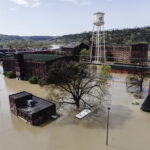Cat bond issuances are hitting record levels, leaving the industry with questions about how long alternative capital will keep pouring into the reinsurance market. That idea emerged during the Standard & Poor’s 30th Annual Insurance Conference in New York from June 3-5, where experts at various vents also tackled topics including record-low interest rates and emerging risks. Concern mixed with optimism as panel discussions confronted industry issues of the day and tried to come up with solutions.
Here is a roundup of some of the conference highlights:
- As the property/casualty industry is well aware of, alternative capital keeps pouring into the reinsurance market. That trend has bumped catastrophe bond and insurance-linked securities issuance to record levels so far in 2014, now at $5.5 billion and counting, industry executives noted during one panel discussion. That included a single bond for $1.5 billion, itself a market record. Panelists, including Greg Hagood, a managing partner at Nephila Advisors LLC, who noted that that level of alternative capital infusion might decline somewhat if a hurricane or other major event hits, Standard & Poor’s said in a release that touched on discussion highlights. Other panelists, including Jay Green, a senior VP at GC Securities, argued that investors are savvy enough to not let one earthquake “send them running for the hills.”
- Another group of experts held a panel discussion on emerging risks. They concluded that figuring out how to manage those risks – often increasingly complex and ever evolving – was key for property/casualty insurers in the coming months and years. The panelists concluded that cyber risk will increase, according to Standard & Poor’s. They also argued that insurers could completely change the industry landscape depending on how they address those risks (cybercrime, climate change and more) by developing new coverage to target those exposures. So what will be the next emerging risk? That could end up being something such as a driverless car. Tom Kavanaugh, an insurance advisory principal at PricewaterhouseCoopers, said during the discussion that this technology “could present a whole new paradigm in assessing risk for software developers, drivers and car manufacturers,” Standard & Poor’s said.
- A panel on the global economy concluded that the U.S. and Europe’s central banks should keep key interest rates at or close to historic lows at least into the middle of 2015. This has been a major point of concern for the insurance industry. Panelists included HSBC U.S. Chief economist Kevin Logan and Standard & Poor’s chief economist Paul Sheard.
“Even with the debt-to-income ratio going down,” people are still cautious,” Logan said, according to Standard & Poor’s. “But the real key problem for the lack of growth of the U.S. economy is business investment spending, which just isn’t picking up.” This trend, he said, will help keep interest rates down low a while longer yet.





















 Flood Cleanup Continues at Kentucky Distillery
Flood Cleanup Continues at Kentucky Distillery  2024 Second on Record for Most Tornadoes in the U.S. in a Year
2024 Second on Record for Most Tornadoes in the U.S. in a Year  The Future of Premium Audits: Using AI Assistants to Streamline Data Collection
The Future of Premium Audits: Using AI Assistants to Streamline Data Collection  Federal Bill Reintroduced to Combat Organized Retail Theft
Federal Bill Reintroduced to Combat Organized Retail Theft 









